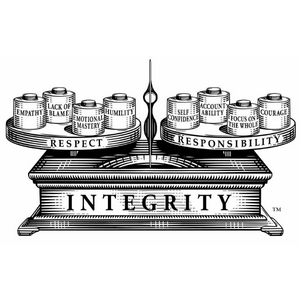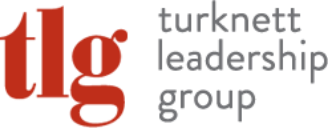
 By Lyn Turknett
By Lyn Turknett
Co-founder and Co-chair, TLG
Someone asked recently whether the Leadership Character Model came first or our book – Decent People, Decent Company – came first. The answer is that the model came first, and in thinking about the years in the early 1990’s when my husband and business partner, Bob Turknett, were developing the model, I was reminded what a heady and exciting time that was.
The model, a framework of the character needed to lead, is visualized as a scale with Integrity as the base and Respect and Responsibility balanced on either side. It grew out of that turbulent era when thinking about leadership was being turned on its head. The model has several core premises:
- Leadership is grounded in character – in who you are, not simply what you do.
- Trust is essential for leadership – and integrity is essential for building trust.
- In addition to integrity, leaders of character must balance respect for others with responsibility for results.
- Leadership is a choice – not a position. We can all lead.
Grounded in Character
I was also reminded of the many great thinkers who influenced us, and of my favorite article of all time – Alan Webber’s “What’s So New About the New Economy,” published almost thirty years ago in January of 1993. On re-reading it, I find it’s still my favorite. There’s so much in the article that describes new forces we still deal with – the rise of the “knowledge economy,” new technology and “networked organizations,” the fall of giants like Sears and the rise of nimble startups and global competition – but the big question the article asks is, what does all this change mean for the daily work of managers?
Webber argued that the goal of management had to become creating an environment where knowledge workers can learn – “from their own experience, from each other, and from customers, suppliers, and business partners.” And then he writes:
“The chief management tool that makes that learning happen is conversation. But the work of conversation introduces its own twist: it brings the character of the individual to the foreground of the workplace. If the job of the manager in the new economy is to eliminate fear, foster trust, and facilitate the working conversations that create new knowledge, then the authenticity, integrity, and identity of the individual turn out to be the most critical managerial assets.” [emphasis mine]
Creating the Leadership Character Model
The initial version of the Leadership Character Model was not created until early 1995, but so much of the thinking of this time was influential. Peter Drucker in Post Capitalist Society was saying that human capital was the only meaningful resource in the new economy, an idea which, in itself, made the “my way or the highway” boss out of touch and ineffective. Sometime during those years, Bob and I heard Frances Hesselbein, CEO of the Girl Scouts from 1976 to 1990, speak at a leadership conference in Boston, and heard her most famous quote – “Leadership is about how to be before it’s about how to do.” Character is at the core.
Picking up any business publication meant finding something about the new style of leadership, and likely stories about old-style leaders who were failing. Fortune published The New Post-Heroic Leadership in February of 1994. From the article:
“As James O’Toole, a professor and leadership expert, puts it, ”Ninety-five percent of American managers today say the right thing. Five percent actually do it.” The pressure is building to walk the talk. Call it whatever you like: post-heroic leadership, servant leadership, distributed leadership, or, to suggest a tag, virtual leadership. But don’t dismiss it as just another touchy-feely flavor of the month. It’s real, it’s radical, and it’s challenging the very definition of corporate leadership for the 21st century.”
Leadership Character is a Balance
I remember walking into a Kmart during that time and being super-frustrated. The store was dirty and disorganized, and there was no one to help me find what I was looking for – I left without buying anything. Two days later I picked up the Wall Street Journal, and there was a front-page story about Joseph Antonini, the failing CEO of Kmart who was described as a micro-managing leader who had grand visions for beautiful stores and magnificent technology, but who hired only loyalists, listened only to himself, and wanted to visit only new stores. Clearly, he had never been to the store in my neighborhood, and he was soon gone.
The transition to new leadership, of course, wasn’t smooth and there were plenty of mistakes – and sometimes faddish moves that threw the baby out with the bathwater. Levi Strauss famously moved to self-managing teams, likely without adequate planning and training, and the move was disastrous for results.
It was clear, though, that rapid changes in technology, the rise of knowledge work, the need to leverage intellect, and the slowness of bureaucratic top-down decision-making would make old-style bosses obsolete. But as Bob and I thought more and more deeply about leadership it also became clear there were qualities of character in old-style leaders that mattered. People who could truly lead by influence, people who had the moxie to tackle a tough problem and rally others to help solve it, had some of the qualities that had long been admired in leadership – courage, confidence, and a penchant for getting things done.
Leaders couldn’t give up the harder side of leadership – accountability for results, the courage to be decisive and take risks – but they had to balance that with the humility needed to listen to the ideas of others, the emotional mastery needed to stay calm and resilient, and the empathy to make others feel seen and included. And their character needed to be grounded in integrity – without that there was never trust and no one willingly followed.
A Leadership Framework
The Leadership Character Model was developed as a tool – and an easy visual – for helping people think about their behavior in any situation. How do I show empathy while I summon the courage to give this person bad news? How do we hold ourselves accountable and learn from this mistake without simply blaming other individuals or departments? It was also developed as a guide for character growth – for becoming our best selves and the leaders we want to be.
Leaders couldn’t give up the harder side of leadership – accountability for results, the courage to be decisive and take risks – but they had to balance that with the humility needed to listen to the ideas of others, the emotional mastery needed to stay calm and resilient, and the empathy to make others feel seen and included. And their character needed to be grounded in integrity – without that there was never trust and no one willingly followed.
We think that kind of character should be omnipresent in organizations. People spend so much time at work. We want organizations to be places of trust, joy, and productivity – places where EVERYONE helps build a culture of character, everyone plays a role in leading the company, and all feel responsible for ethics, inclusion – and results – in the organization.

